Read on:
Beginners’ Guide for Microsoft Hyper-V: Overview of Hyper-V – Part 1
Beginners’ Guide for Microsoft Hyper-V: How to Install Microsoft Hyper-V Using Server Manager – Part 2
Beginners’ Guide for Microsoft Hyper-V: How to Install Microsoft Hyper-V with PowerShell – Part 3
Read More
Introduction
One of the key capabilities of Microsoft Hyper-V cluster hosts running in a Windows Server Failover Cluster (WSFC) configuration is the ability to run virtual machines as a highly available role. Running virtual machines as a clustered role provides high availability for the virtual machine so that if a host fails, the virtual machine can continue to run on another Hyper-V host. First, let’s look at Hyper-V virtual machine high availability for beginners and see what this is and how it is configured.
High availability is required for production
For production-critical systems, a single point of failure is not desirable. Instead, you want to ensure you have redundant systems to protect against failure scenarios, including hardware or software failures. As this relates to Hyper-V, the whole point of running virtual machines on a Hyper-V “cluster” is that you are not relying on a single Hyper-V host to run your VMs.
A failure of a single host would take down all virtual machines running on that host. By running multiple Hyper-V hosts connected to shared storage and redundant network connections, the resiliency of your VMs is significantly bolstered. However, there is still some configuration we need to perform to tell the Failover Cluster we want to host the virtual machines in a high availability configuration.
Requirements for Hyper-V high availability
According to Microsoft, if you are creating a Windows Server Failover Cluster that includes clustered virtual machines, the cluster servers must support the hardware requirements for the Hyper-V role. Note the following requirements for Hyper-V cluster hosts:
- Hardware-assisted virtualization. This option is available in processors that include virtualization. It includes Intel Virtualization Technology (Intel VT) or AMD Virtualization (AMD-V) technology
- You need to enable Hardware-enforced Data Execution Prevention (DEP). For Intel, you must enable Intel XD bit (execute disable bit) or AMD NX bit (no execute bit)
- Multiple redundant network paths
- Shared storage
- Active Directory domain membership
Guest Clustering
One way to boost the resiliency and availability of your critical applications is to create a “guest cluster” running on top of your physical Hyper-V cluster nodes.
So what is a guest cluster?
A guest cluster uses virtual machines configured as Windows Server Failover Cluster nodes to host critical applications. To the guest application, the virtual machine nodes are identical to the physical failover cluster hosts.
The guest cluster nodes running as virtual machines are each placed on different Hyper-V hosts so that a single host failure will not take down more than one cluster host. If the physical Hyper-V host housing one of the guest cluster nodes goes down, the guest cluster fails over the application to the remaining cluster host. The application seamlessly fails over to the healthy host with little downtime.
What is a clustered role?
Guest clustering takes care of the guest applications and services running in the guest cluster hosts. However, it does not take care of the virtual machine availability running on the physical Hyper-V cluster. We need to ensure the guest cluster hosts themselves are high availability. You may wonder why virtual machines are not highly available if these are created on a Failover Cluster running Hyper-V. It is a good question. However, simply configuring a Windows Server Failover Cluster does not automatically enable high availability on each virtual machine. With a Windows Server Failover Cluster, the infrastructure is in place to configure virtual machines.
If a clustered server fails while running the role, another clustered server automatically begins running the role (a process known as failover). If the clustered role fails, it can be automatically restarted on the same server or another server in the cluster. To benefit from automated restarts of virtual machines running on your Hyper-V cluster hosts, you need to configure the virtual machines as a clustered role with high availability.
Configuring virtual machine high availability
There are two scenarios for configuring high-availability virtual machines, including high availability for existing and new virtual machines. We will take a look at both. But first, let’s consider making existing Hyper-V virtual machines highly available.
You can have virtual machines running on a Hyper-V standalone host, join the standalone host to a Hyper-V cluster, and then configure the VMs to be highly available. There is no additional license cost for configuring high availability for virtual machines running on a Windows Server Failover Cluster with the Hyper-V role installed.
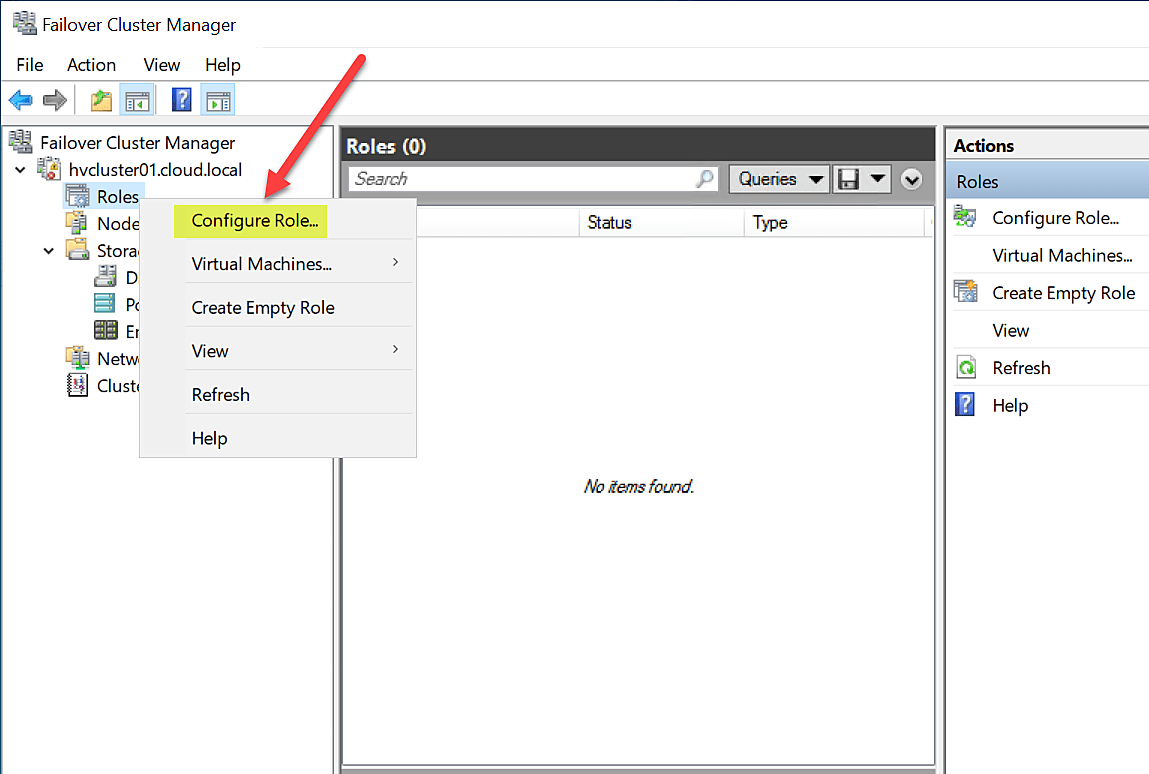
It launches the High Availability Wizard. Click Next to start the configuration of the high-availability virtual machine.

On the Select Role screen, scroll down to the Virtual Machine option. Here, we are selecting what we want to make highly available.
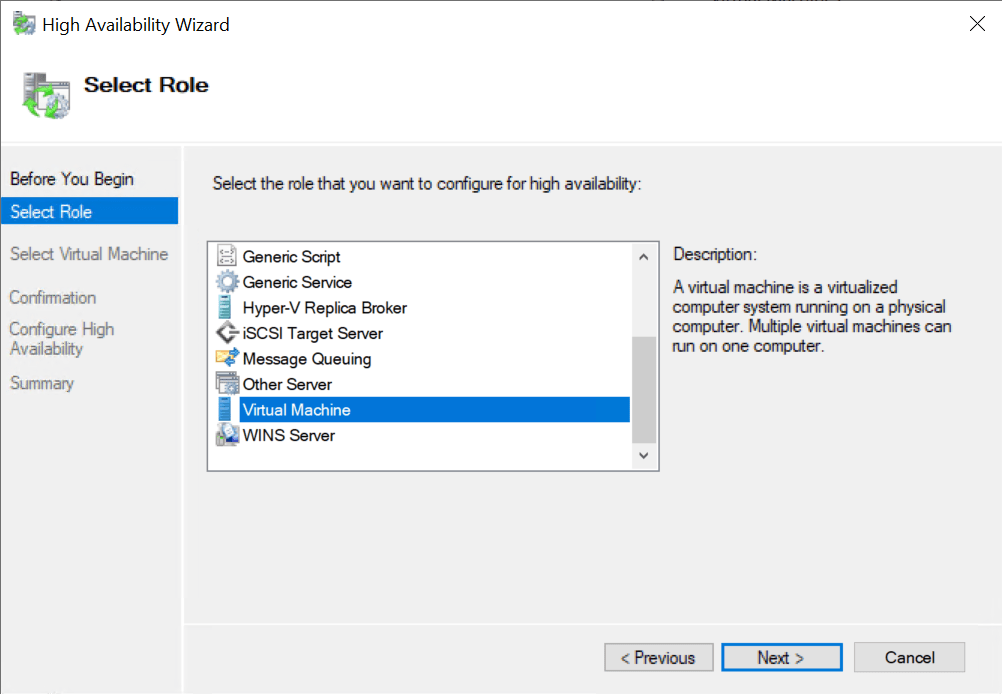
On the Select Virtual Machine screen, select the Hyper-V virtual machine you want to enable for high availability. Click Next.
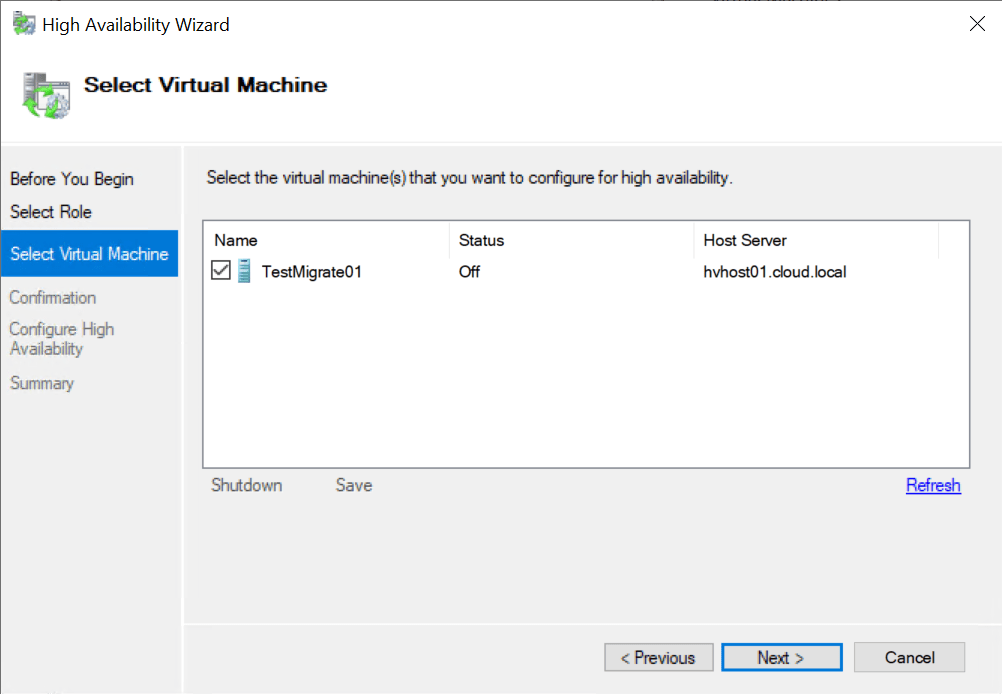
On the confirmation screen, you confirm the operation to enable high availability.
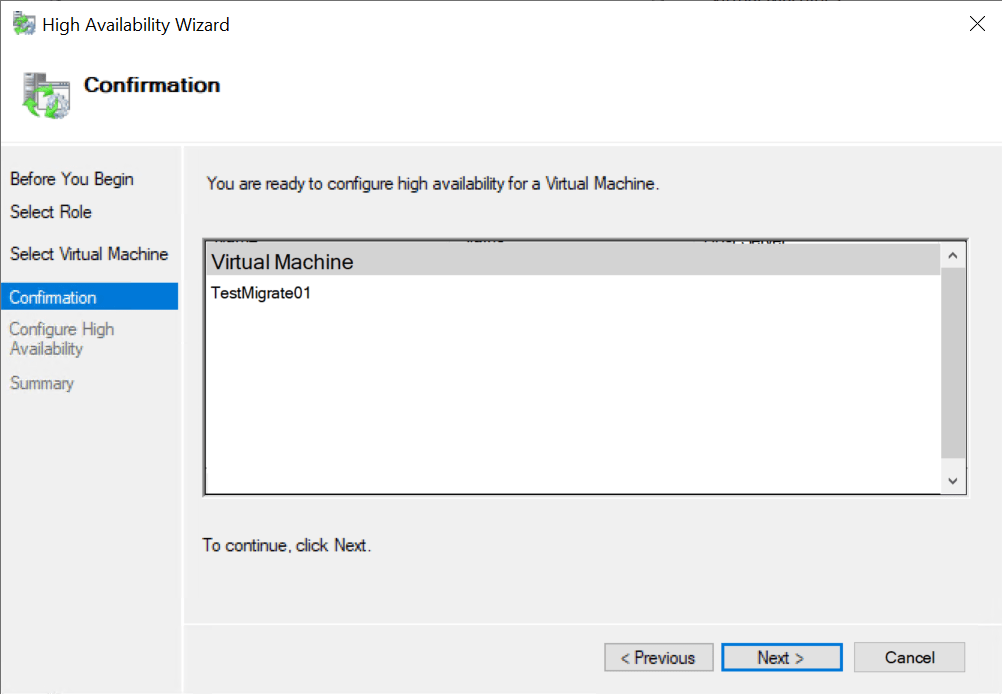
On the Summary screen, you should see the Hyper-V virtual machine successfully enable high availability.

Now let’s look at creating a new virtual machine with high availability enabled from the beginning. In Failover Cluster Manager, you can right-click on the Roles node and select Virtual Machine.
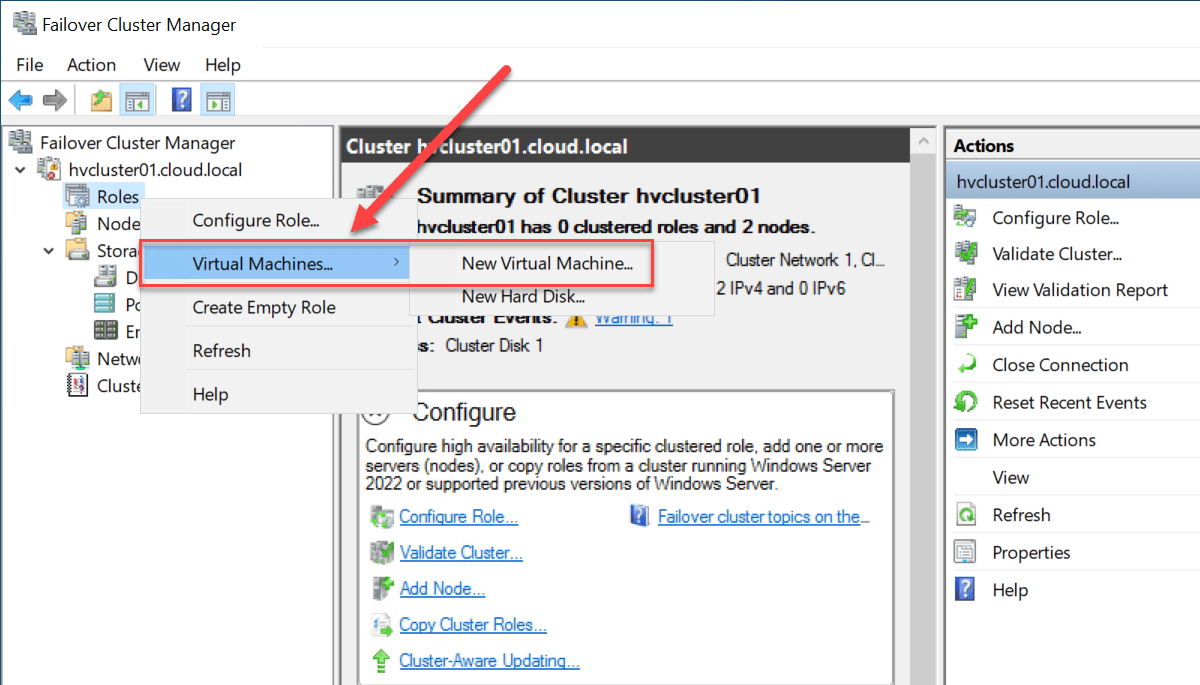
You will need to select the host you want to use to provision the new Hyper-V virtual machine.
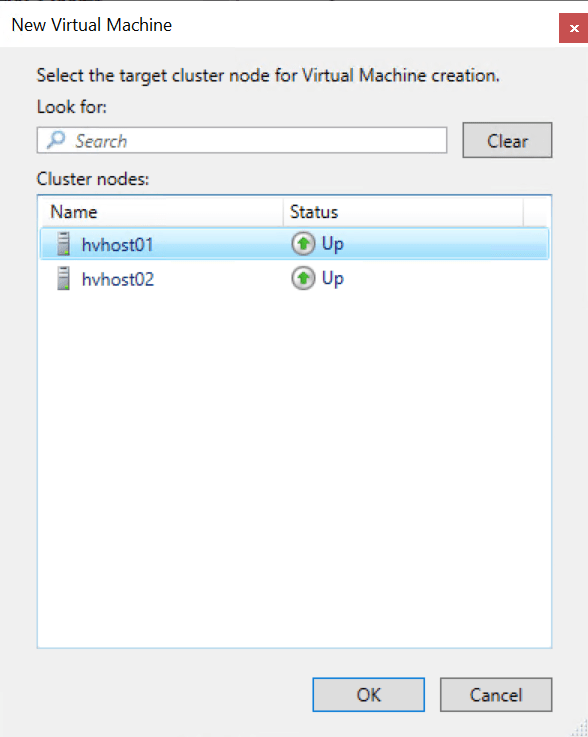
The New Virtual Machine Wizard launches. Click Next.
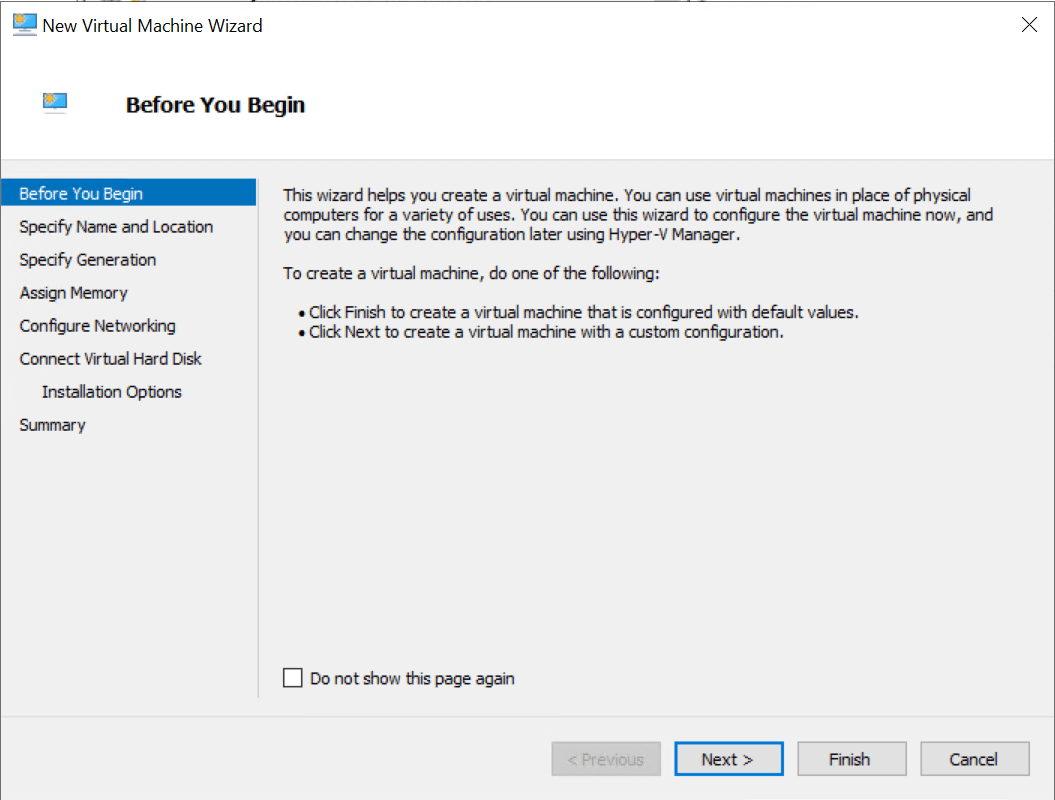
First, we need to choose a name for the new virtual machine. Here, you can choose to store the VM in a different storage location or leave the default.
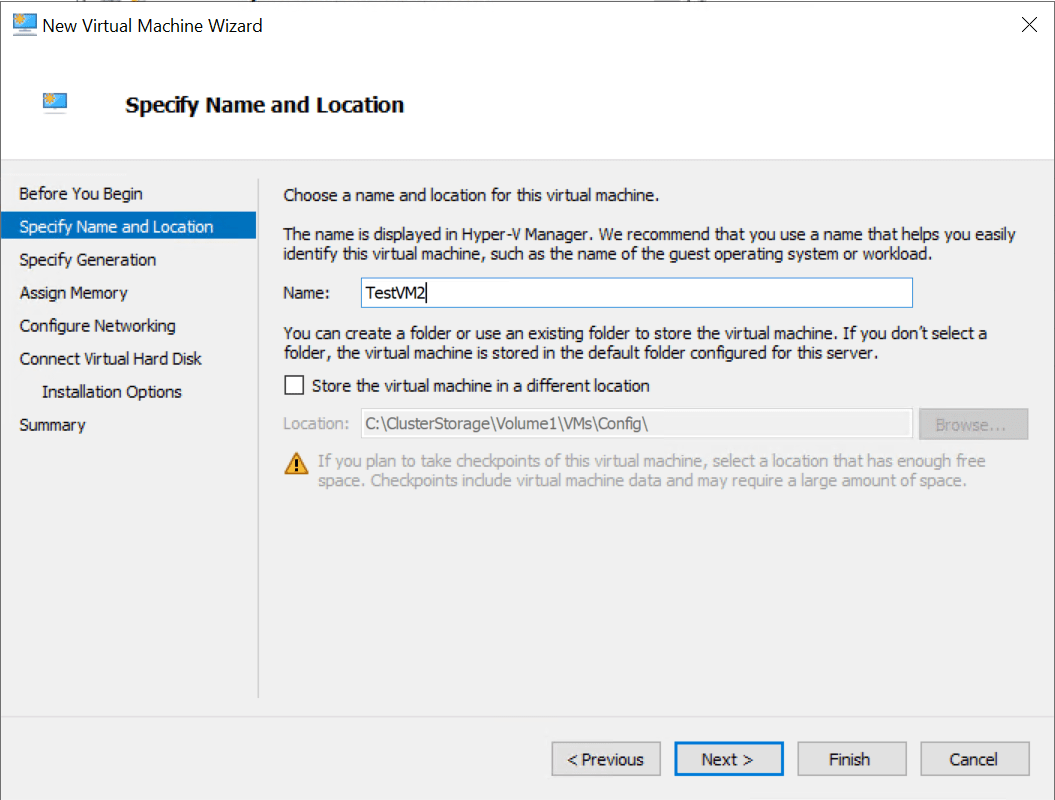
Choose the virtual machine generation.
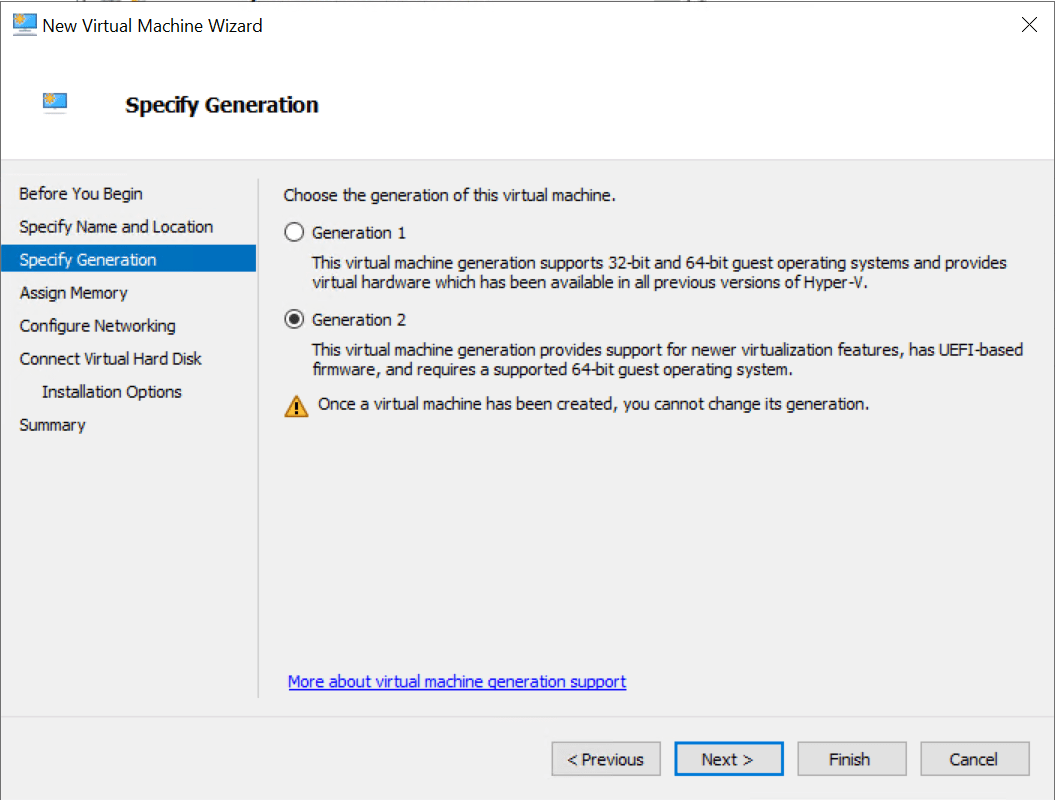
Configure the memory assignment for the new virtual machine.
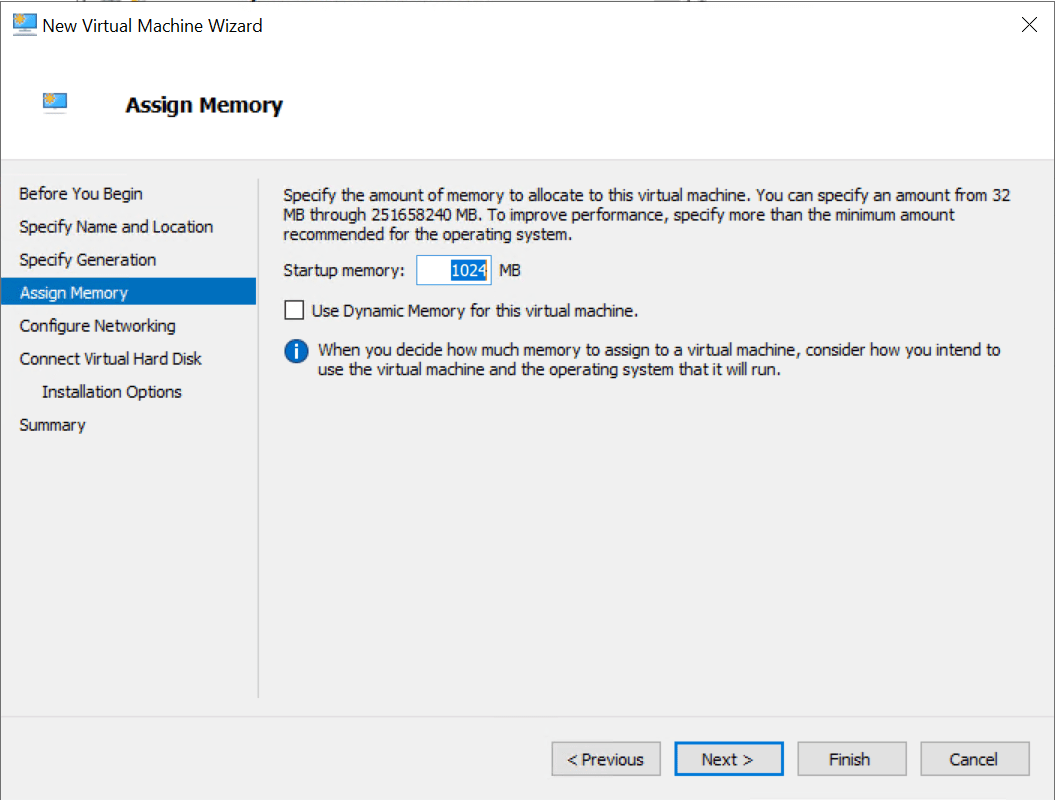
Configure networking for the new Hyper-V virtual machine. Here, we can connect the virtual machine to a specific virtual switch.
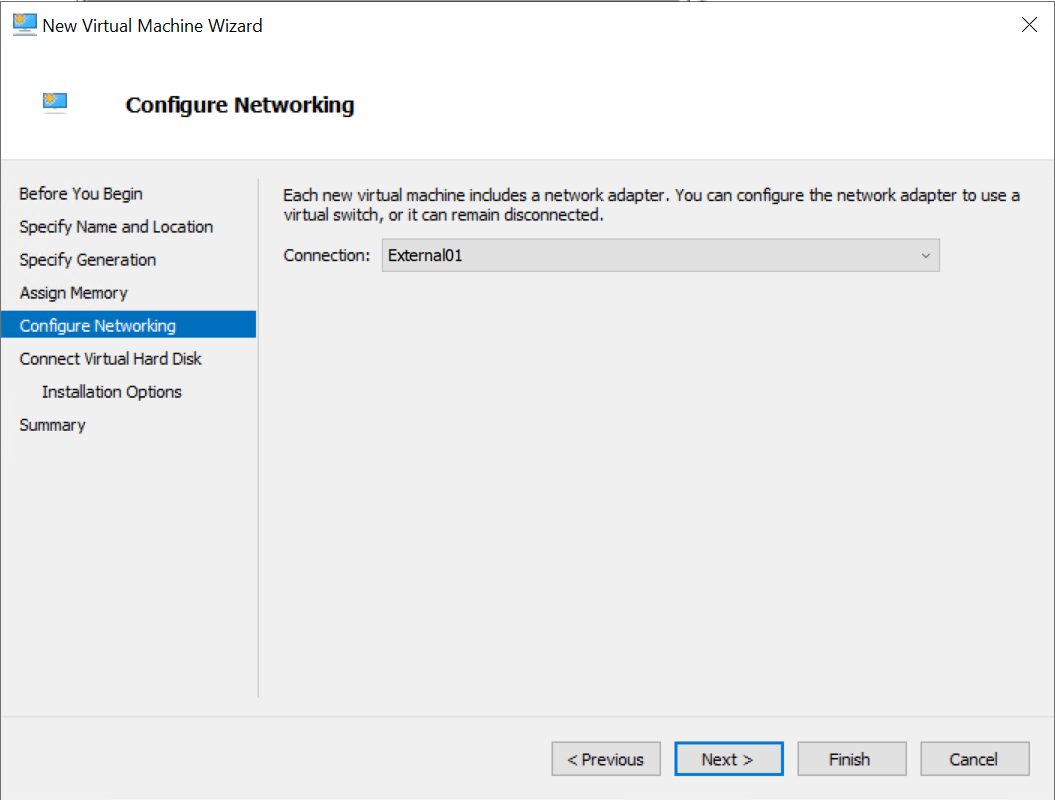
Connect your new VM to a virtual hard disk and configure the size of the disk.
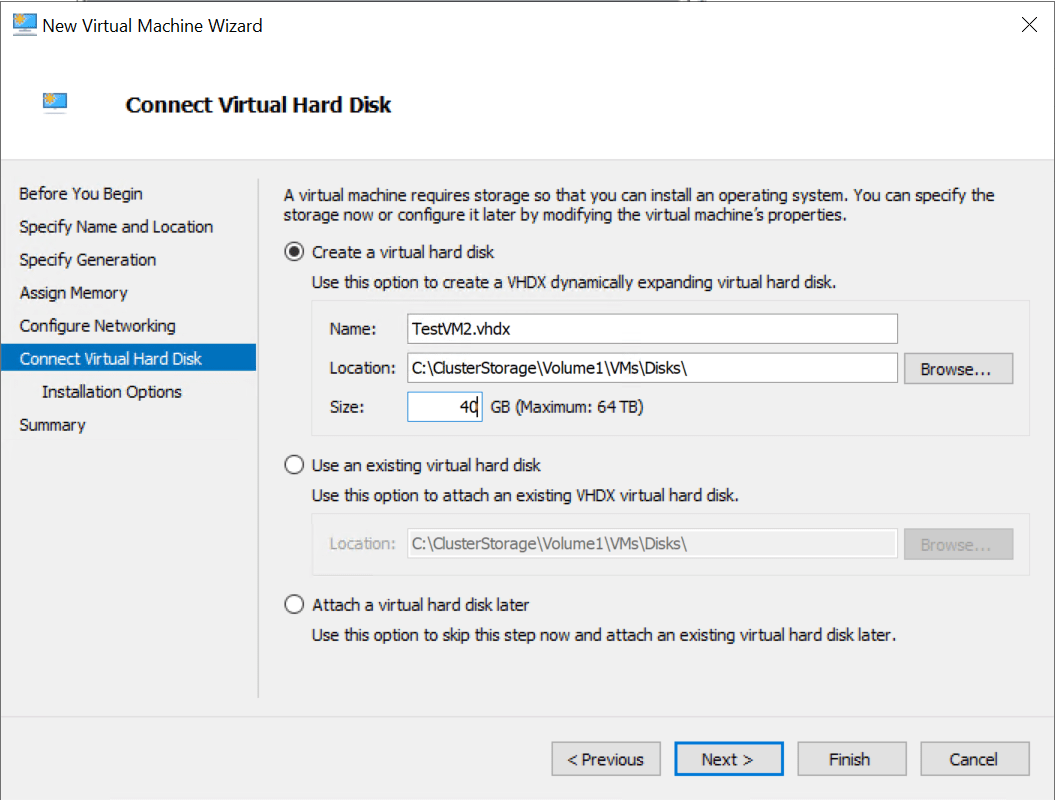
Choose the operating system installation option.
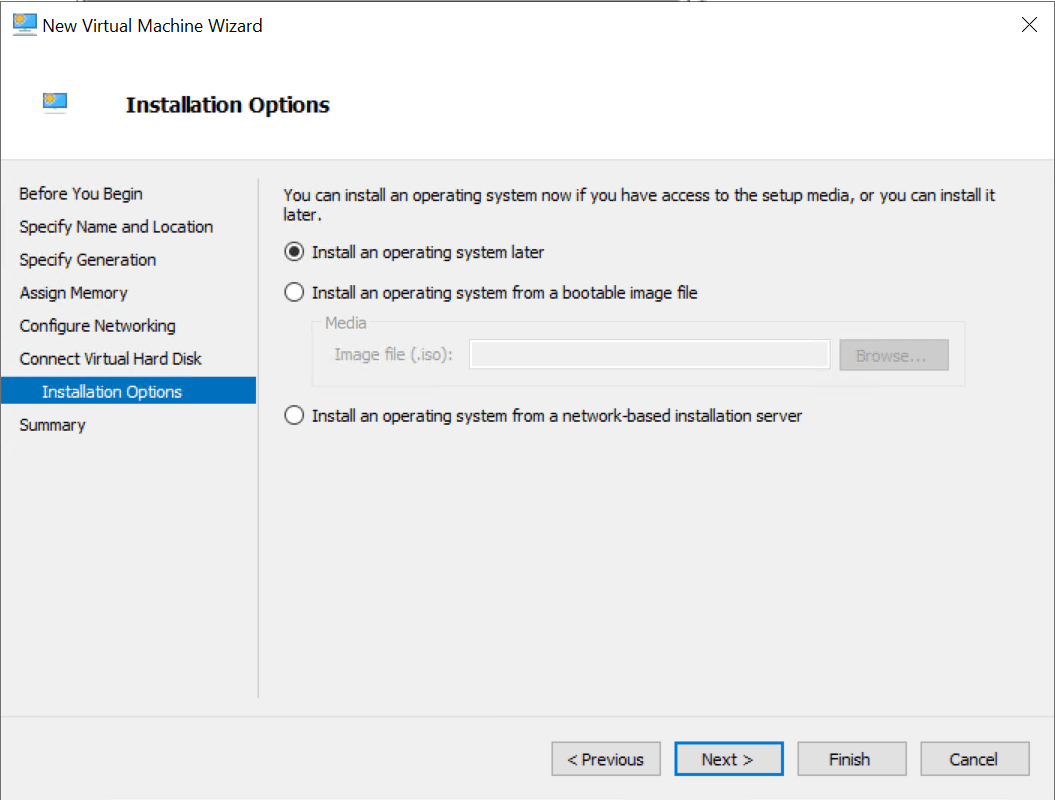
Finally, we get to the step of reviewing the summary of the new Hyper-V virtual machine. Click Finish.
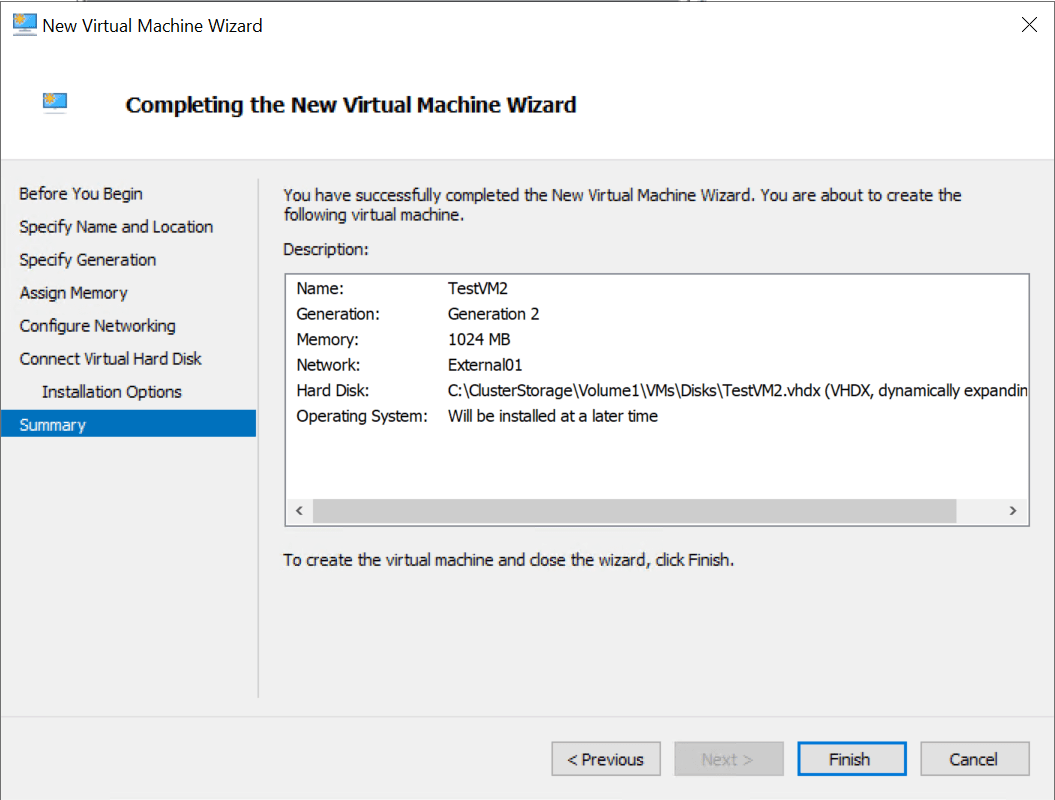
After completing the new virtual machine wizard, the High Availability Wizard launches. It will automatically have the new virtual machine populated for high availability configuration. Click Finish to complete the high availability wizard.
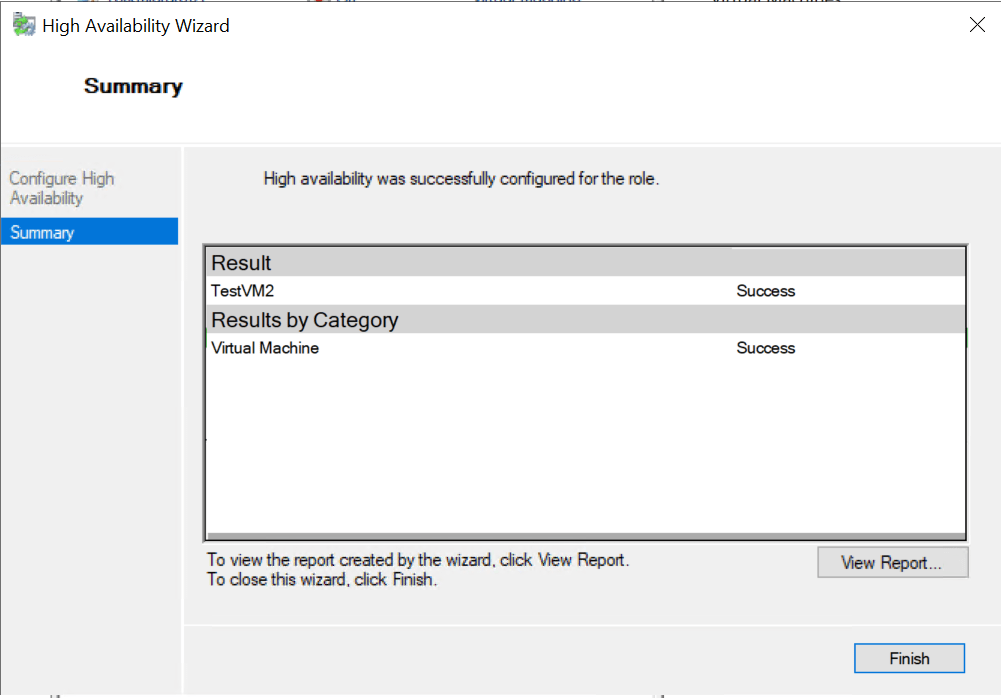
Wrapping Up
Hyper-V virtual machine high availability is critical to ensuring essential resources remain online when a Hyper-V host or other infrastructure fails, taking one of the Hyper-V hosts offline. With the high availability wizard in Failover Cluster Manager, you can establish virtual machines as clustered roles. By doing this, the VM automatically fails over to a healthy Hyper-V host in the event of a node failure in the Hyper-V cluster.
Follow our Twitter and Facebook feeds for new releases, updates, insightful posts and more.
Beginners Guide for Microsoft Hyper-V: How to Install Microsoft Hyper-V in Windows Server Core – Part 4
Beginners Guide for Microsoft Hyper-V: Remote Management of Hyper-V – Part 5
Beginners Guide for Microsoft Hyper-V: How to Install Hyper-V Server – Part 6
Beginner’s Guide for Microsoft Hyper-V: What is Azure Stack HCI – Part 7
Beginner’s Guide for Microsoft Hyper-V: Windows Admin Center Hyper-V Management – Part 8
Beginner’s Guide for Microsoft Hyper-V: Configuration of Hyper-V Networking Best Practices – Part 9
Beginner’s Guide for Microsoft Hyper-V: Hyper-V Storage Best Practices and Configuration – Part 10
Beginner’s Guide for Microsoft Hyper-V: How to build a Virtual Lab with Hyper-V – Part 11
Beginner’s Guide for Microsoft Hyper-V: Top 10 PowerShell Commands for Hyper-V – Part 12
Beginner’s Guide for Microsoft Hyper-V: How to Create a Hyper-V Virtual Machine – Part 13
Beginner’s Guide for Microsoft Hyper-V: Hyper-V Shared Storage for Beginners – Part 14
Beginner’s Guide for Microsoft Hyper-V: How to Create Hyper-V Cluster – Part 15
Beginner’s Guide for Microsoft Hyper-V: What is Non-Uniform Memory Access (NUMA) – Part 16
Beginner’s Guide for Microsoft Hyper-V: Hyper-V Dynamic Memory – Part 17
Beginner’s Guide for Microsoft Hyper-V: Cluster Aware Updating (CAU) – Part 18
Beginner’s Guide for Microsoft Hyper-V: Hyper-V Containers – Part 19
Beginner’s Guide for Microsoft Hyper-V: Managing Windows Server Containers with Windows Admin Center – Part 20
Beginner’s Guide for Microsoft Hyper-V: What are Hyper-V Checkpoints – Part 21
Beginners Guide for Microsoft Hyper-V: How to Create Cluster Shared Volumes (CSVs) – Part 22
Beginners’ Guide for Microsoft Hyper-V: VHD vs VHDX Vs AVHD/AVHDX: Overview of Virtual Disk Formats – Part 23
Beginners’ Guide for Microsoft Hyper-V: Hyper-V Live Migration – Part 24



Leave A Comment